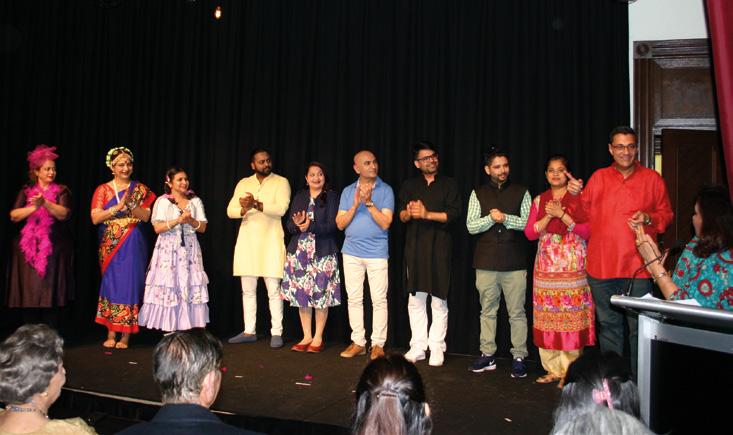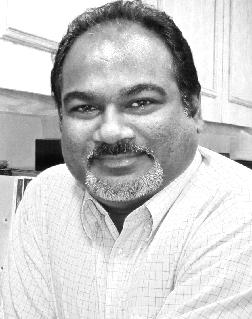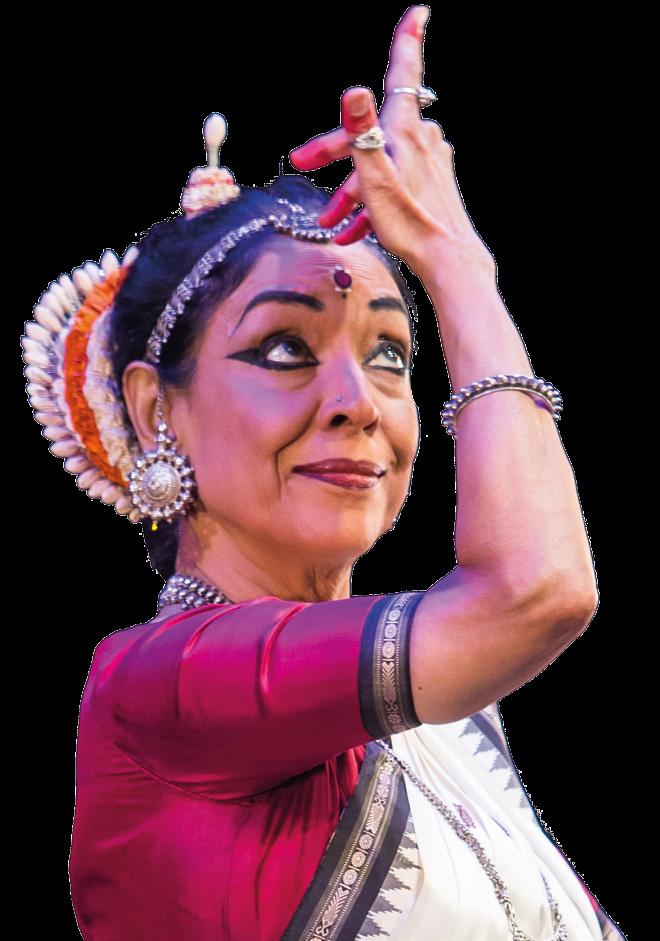
2 minute read
Mirrors and angles
from 2018-11 Melbourne
by Indian Link
Flashes of brilliance at Kaleidoscope, a community theatre group workshop
BY PREETI JABBAL
The dynamic interaction between emotional experience and imaginative creativity was explored recently through Natyadarpan’s Kaleidoscope.
In their latest theatrical offer the Melbourne-based community artist group had invited the audience to fall in love all over again, and they did.
The collective presentation of freshers and experienced actors that was held at Kew Court House recently, delivered some dynamic storytelling and a rich theatre experience.
The actors were encouraged to utilise techniques that trigger, sculpt and layer the elements of their characters, finding new perspectives on scripted material, and they did not disappoint
Suman Chaudhary uniquely used the medium of traditional classical Indian dance Bharatanatyam to enact the short script for Vitamin D.
Expressive and nuanced, Suman’s body and voice lamented modern lifestyles where children and adult are no longer in tune with nature. She expressed her sadness at gizmos and gadgets taking over the simple pleasure of a walk or run outdoors.
Young Piyush Arora loudly gave voice to Ghutan, the suffocation of an artist, trapped, unable to liberate emotional, physical and creative blocks. Stuck in a rut he struggles to escape and give wings to his dreams.
Piyush wrote his own script while Minal Khairnar Burkule and Vipin chose to enact scripts written by Mandar Vaidya and Vipin Gaindhar titled Kashmakash, a virtual reality.
Hem Tiwary in Kalaakar ki ghutan (suffocation of an artist), Prajakta Kale’s Aaj ki Sita (modern day Sita) and Ankush Jindal and Anamika Sharma in Hamare jaisi hi (One of us) addressed social issues in a constructive way.
The performances were a great blend of passion and process not just as a creative output but an educational experience. The artists’ attempt was to access and trigger truthful emotions quickly and the audience proved receptive to their craft.
The show continued with Seema Gupta’s hysterically charged act Mein Kahan Surakshit Hoon (Where should I feel safe?) followed by Anamika Sharma’s very confident performance on Also Ran. Both were adept at adding depth to their character and complexity to their performances.
Not all artists had the ability to hold a room on their own, however, they were able to invest in their passion and uplift their commitment to their craft.
According to Mandar Vaidya, the brain behind Naytadarpan, this community-based organisation, through its activities, strives to project reflections of life experiences in a theatrical form.

Mandar, who is an alumnus of Mumbai’s Prithvi theatre, migrated to Melbourne in 2002. Since then he has acted and directed in over 30 plays in English, Hindi and Marathi languages.


As a not-for-profit organisation Natyadarpan conducts acting workshops and presents dramas regularly to Melbourne audiences.
This year’s Kaleidoscope was no bells and whistles. It was just simple storytelling capturing the essence and complexity of what it means to be humans.
With Kaleidoscope
Natyadarpan’s purpose of bringing diverse artist under the same roof to explore, educate and entertain was well and truly served.
The fruits of a lifelong pursuit of excellence and untiring discipline were on display at the Melbourne Theatre Company recently, where Padma Shri Madhavi Mudgal performed her first ever show in Melbourne.
Internationally acclaimed Odissi exponent, teacher and choreographer, Madhavi has exerted a profound influence in this Indian classical dance genre.

Numerous awards and honours have come her way, including the President of India’s award of Padma Shri, Central and the Orissa State Sangeet Natak Akademi Award, the Sanskriti Award, the Grande Medaille de la Ville by the city of Paris, Delhi State’s Parishad Samman, and the Nritya Choodamani among many.
Madhavi is the prime disciple of the great Guru Kelucharan Mohapatra who was revered for his great contribution and prominent role in the revival of Odissi dance.
Odissi dance dates back to the 2nd century







